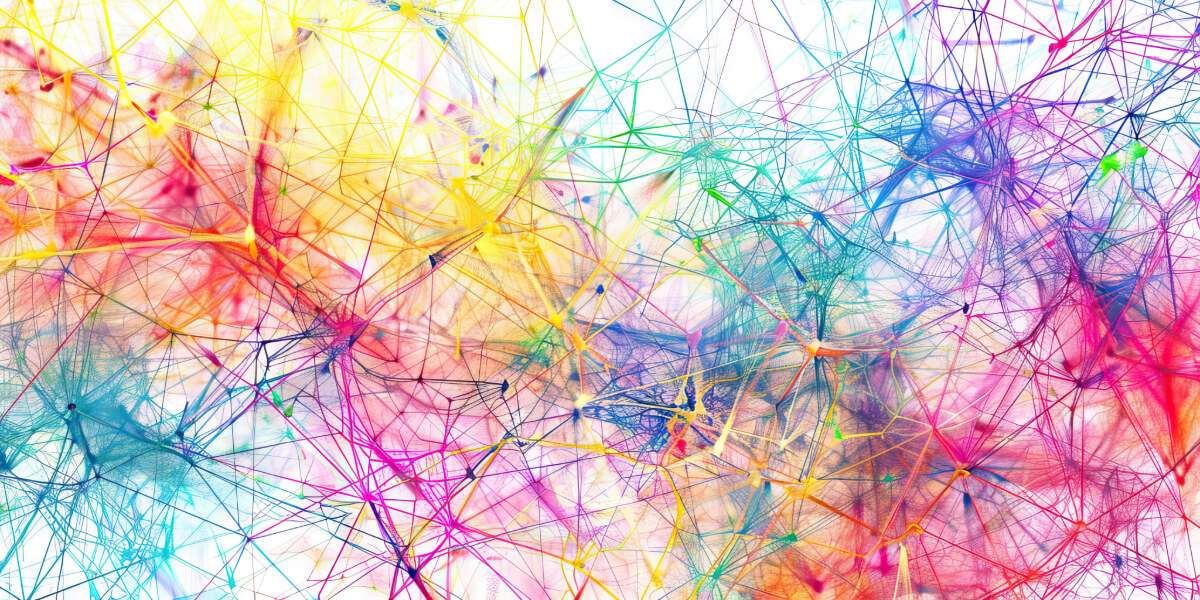The GraphDB Revolution: Giving fangs to Large Language Models in enterprises
09 Jul 2024

Imagine you’re a detective trying to solve a complex case involving international finance, environmental policy, and emerging technologies. You have a wall covered in photos, documents, and sticky notes, all connected by a web of red strings. Now, picture that wall as a living, breathing entity that can answer your questions, make connections you hadn’t seen, and even suggest new leads. That’s the power of Graph Databases (GraphDBs) in the world of enterprise knowledge systems.
But why are we suddenly talking about GraphDBs? Aren’t traditional databases good enough? Well, let’s take a trip down memory lane. In the 1970s, relational databases revolutionized data management. They were the digital filing cabinets of the computer age, neatly organizing information into tables and rows. For decades, they served us well. But in our increasingly interconnected world, where the value lies not just in the data itself but in the relationships between data points, these digital filing cabinets are starting to creak under the strain.
Enter GraphDBs, the cool new kid on the database block. But what makes them so special? Let’s break it down:
- Nodes and Edges: In a GraphDB, data is represented as nodes (entities) connected by edges (relationships). For instance:
(Company A) -[SUPPLIES]-> (Product X)
(Product X) -[USED_IN]-> (Industry Y)
(Industry Y) -[REGULATED_BY]-> (Government Agency Z)This structure allows for intuitive representation of complex, real-world relationships.
- Properties: Both nodes and edges can have properties, providing rich context:
(Company A {revenue: "$1B", founded: 1990}) -[SUPPLIES {since: 2010, volume: "10000 units/year"}]-> (Product X {price: "$100", weight: "5kg"})- Flexible Schema: Unlike rigid relational databases, GraphDBs can easily adapt to new types of relationships and entities without major restructuring.
- Efficient Querying: GraphDBs excel at traversing relationships, making complex queries much more efficient.
Now, let’s talk about how we get from raw data to this interconnected knowledge web. Enter the data pipeline, the unsung hero of our GraphDB story. Here’s how it typically works:
- Data Extraction: This is where we gather data from various sources – databases, APIs, documents, web pages, you name it. It’s like a massive scavenger hunt for information.
- Data Processing: This is where the magic (and a lot of hard work) happens:
– Cleaning: We remove duplicates, correct errors, and handle missing values. It’s like decluttering your digital attic.
– Transformation: We convert data into a consistent format. Imagine translating a bunch of foreign languages into a single, universal language.
– Entity Extraction: Using Natural Language Processing (NLP) and other AI techniques, we identify entities and relationships from unstructured data. It’s like teaching a computer to read and understand human language.
– Integration: We merge data from different sources, resolving conflicts. This is where we start connecting those red strings on our detective’s wall.
- Graph Construction: Now we’re ready to build our graph:
– Node Creation: We create nodes for each entity we’ve identified.
– Edge Creation: We establish relationships between these nodes.
– Property Assignment: We add properties to nodes and edges based on our processed data.
- Knowledge Graph Enhancement: This is where we level up our graph:
– Pattern Recognition: We use AI to identify patterns and infer additional relationships.
– External Knowledge Integration: We can enhance our graph by connecting it with external knowledge bases or ontologies.
Let’s see this in action with a more complex example:
(Company A) -[PRODUCES {volume: "1M units/year"}]-> (Product X)
(Product X) -[CONTAINS {percentage: 40%}]-> (Material Y)
(Material Y) -[SOURCED_FROM {since: 2015}]-> (Region Z)
(Region Z) -[HAS_CLIMATE_RISK {type: "water scarcity", severity: "high"}]-> (Climate Risk)
(Government Agency G) -[REGULATES {policy: "Carbon Tax"}]-> (Industry I)
(Company A) -[OPERATES_IN]-> (Industry I)With this structure, we can ask complex questions like “What products of Company A might be affected by water scarcity in their supply chain, and how might new carbon tax regulations impact their production?” The GraphDB can efficiently traverse these relationships to provide insights that would be challenging to uncover with traditional databases.
But here’s where it gets really exciting. Enter Large Language Models (LLMs), the latest breakthrough in AI. Think of GraphDBs and LLMs as the power couple of the AI world. GraphDBs bring structured, factual knowledge to the relationship, while LLMs contribute natural language understanding and generation.
Now, we’ve talked about GraphDBs and LLMs, but there’s another player in this game that deserves our attention: Vector Databases, or VectorDBs. Think of VectorDBs as the translators in our knowledge system, bridging the gap between the structured world of GraphDBs and the more fluid, language-based realm of LLMs.
Imagine you’re trying to describe a cat to someone. You might use words like “furry,” “four-legged,” “whiskers,” and so on. Each of these descriptors is like a dimension in a multi-dimensional space. Now, imagine plotting these descriptions in this space – you’d end up with a unique point that represents “cat-ness.” That point in multi-dimensional space is essentially a vector, and a VectorDB is designed to store and efficiently search these vectors.
In the context of our knowledge systems, VectorDBs play a crucial role:
- Embedding Generation: When we feed text (like a document or a query) into an LLM, it can generate a numerical representation called an embedding. This embedding captures the semantic meaning of the text in a way that computers can understand and compare.
- Efficient Similarity Search: VectorDBs are optimized to quickly find vectors (embeddings) that are similar to a given vector. This is like finding ideas or concepts that are semantically similar.
- Bridging Structured and Unstructured Data: While GraphDBs excel at representing structured relationships, and LLMs are great at understanding and generating natural language, VectorDBs help connect these two worlds.
So, how does this all come together in a knowledge query system? Let’s walk through it:
- Knowledge Representation: Our GraphDB stores our structured knowledge – entities, relationships, and their properties.
- Embedding Layer: We use an LLM to generate embeddings for the nodes and relationships in our graph, storing these in our VectorDB.
- Query Processing: When a user asks a question, we again use the LLM to generate an embedding for this query.
- Similarity Search: We use the VectorDB to find graph elements (nodes, relationships) with embeddings similar to our query embedding.
- Graph Traversal: Armed with these relevant starting points, we can now efficiently traverse our GraphDB to find pertinent information.
- Response Generation: Finally, we use the LLM to generate a natural language response based on the information retrieved from our graph.
Let’s see this in action with our water scarcity example:
(Company A) -[PRODUCES]-> (Product X)
(Product X) -[CONTAINS]-> (Material Y)
(Material Y) -[SOURCED_FROM]-> (Region Z)
(Region Z) -[HAS_CLIMATE_RISK]-> (Climate Risk: Water Scarcity)Now, imagine a user asks: “What products might be affected by water shortages?”
- The LLM generates an embedding for this query.
- The VectorDB finds similar embeddings, which might point to nodes like “Climate Risk: Water Scarcity” and “Region Z”.
- Starting from these nodes, we traverse our graph, identifying affected materials, products, and companies.
- The LLM then generates a response like: “Product X, produced by Company A, might be affected by water shortages. It contains Material Y, which is sourced from Region Z, an area at high risk of water scarcity.”
This combination of GraphDBs, VectorDBs, and LLMs creates a powerful, flexible system that can handle both structured relationships and nuanced, language-based queries. It’s like giving our knowledge system both a logical brain (GraphDB) and an intuitive, language-savvy brain (LLM), with VectorDB acting as the corpus callosum connecting the two.
But let’s not get carried away with the sci-fi fantasies just yet. Building these systems is no walk in the park. It’s more like trying to build a park while juggling chainsaws and reciting Shakespeare. The challenges are immense. Data quality is a big one. As the old computer science adage goes, “Garbage in, garbage out.” Ensuring the accuracy and reliability of the information in these systems is crucial, especially when making high-stakes business decisions.
Then there’s the ethical dimension. As we build these incredibly powerful knowledge systems, we need to grapple with questions of privacy, bias, and the potential misuse of information. We’re building tools that could revolutionize business intelligence, but in the wrong hands, they could also be used for anti-competitive practices or privacy violations. It’s a responsibility we can’t take lightly.
Despite these challenges, the potential benefits are too great to ignore. We’re standing on the brink of a new era in knowledge management. The synergy between GraphDBs, VectorDBs, and LLMs promises to reshape how we interact with and leverage our collective knowledge. It’s a future where the boundaries between structured data and natural language blur, and where the full wealth of an organization’s knowledge is at everyone’s fingertips, ready to be explored, understood, and applied in ways we’re only beginning to imagine.
As we stand at this crossroads of data science and business intelligence, one thing is clear: the future of enterprise strategy will be shaped by our ability to connect the dots in the vast universe of corporate and global knowledge. The question is, are we ready to look through it and face the wonders – and challenges – that await us on the other side?
The choice, as always, is ours. So, shall we graph on?


